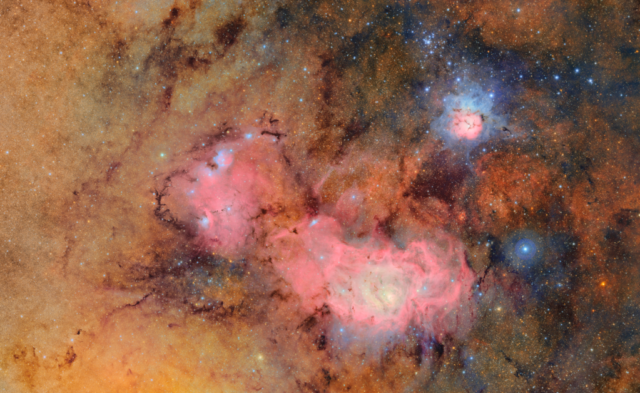
NEW YORK (AP) — The largest digital camera ever built released its first shots of the universe Monday — including colorful nebulas, stars and galaxies.
The Vera C. Rubin Observatory, located on a mountaintop in Chile, was built to take a deeper look at the night sky, covering hidden corners. Funded by the U.S. National Science Foundation and U.S. Department of Energy, it will survey the southern sky for the next 10 years.

Made from over 1100 images captured by NSF-DOE Vera C. Rubin Observatory, this image contains an immense variety of objects, demonstrating the broad range of science Rubin will transform with its 10-year Legacy Survey of Space and Time. The image includes about 10 million galaxies, roughly .05% of the approximately 20 billion galaxies Rubin Observatory will capture over the next decade. Image by NSF–DOE Vera C. Rubin Observatory
The observatory’s first look features the vibrant Trifid and Lagoon nebulas located thousands of light-years from Earth. A light-year is nearly 6 trillion miles. A gaggle of galaxies known as the Virgo Cluster were also captured, including two bright blue spirals.
READ MORE: Euclid space telescope unveils new images of galaxies billions of light years away
The observatory hopes to image 20 billion galaxies and discover new asteroids and other celestial objects.
The effort is named after astronomer Vera Rubin, who offered the first tantalizing evidence that a mysterious force called dark matter might be lurking in the universe. Researchers hope the observatory’s discerning camera may yield clues about this elusive entity along with another called dark energy.

This image captures a small section of NSF–DOE Vera C. Rubin Observatory’s view of the Virgo Cluster, revealing both the grand scale and the faint details of this dynamic region of the cosmos. Bright stars from our own Milky Way shine in the foreground, while a sea of distant reddish galaxies speckle the background. Image by NSF–DOE Vera C. Rubin Observatory
The Associated Press Health and Science Department receives support from the Howard Hughes Medical Institute’s Department of Science Education and the Robert Wood Johnson Foundation. The AP is solely responsible for all content.
Support PBS News Hour
Your donation makes a difference in these uncertain times.

















































